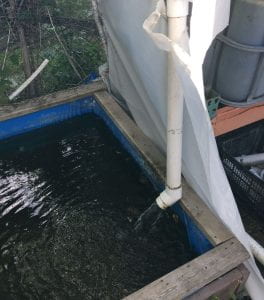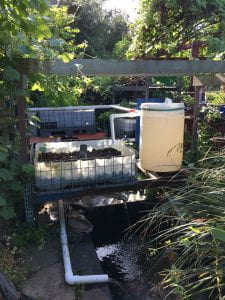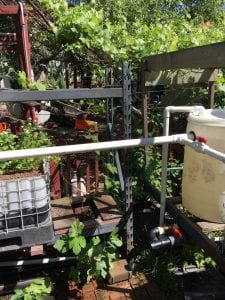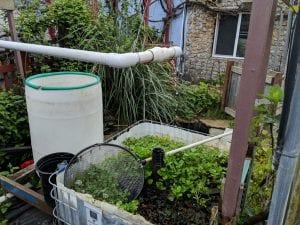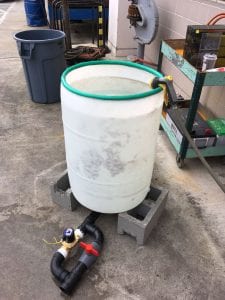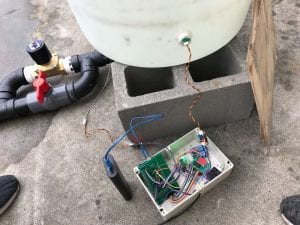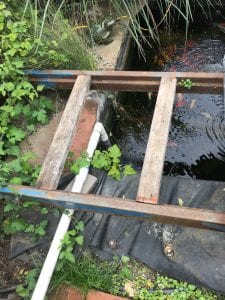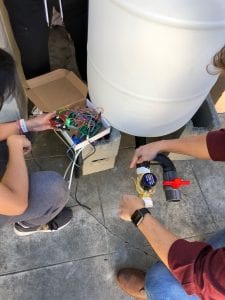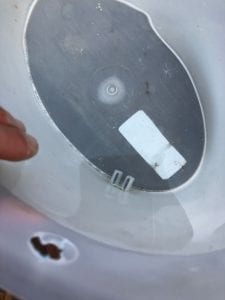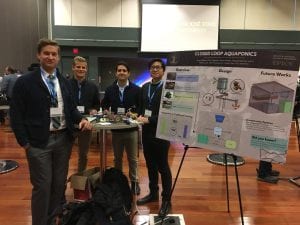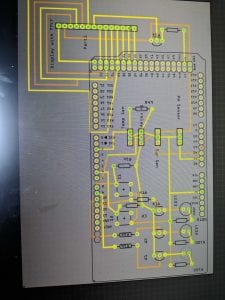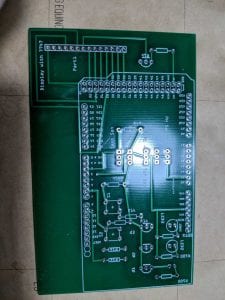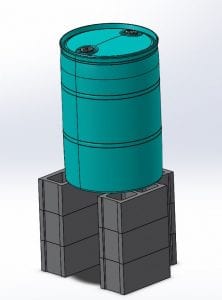Blog #7
Team: “Veggie Sticks”
Project Updates
Installation is ALMOST DONE!! The installation was set back slightly due to the amount of additional work that was required to clear the area and move the plant beds around. First, the barrel needed some final modifications for it to be ready for the piping swap. A two inch diameter hole was made in the side of the barrel to serve as the clean water output. This was sealed with a rubber gasket to prevent any chance of leaks. Next, the swirl filter was put into place, and the piping was connected to the output of the fish pond pump. Various length of pipe were cut and mended in order to make this work. Finally, the piping for the output of the barrel was installed. Thanks to our own PVC specialist and Pipe Master, Aaron, this process went on without a hitch! In the picture below, you can see the new piping set up. The vertical section of pipe on the left hand side enters through the top of the barrel. This is where the water is pumped in directly from the fish pond.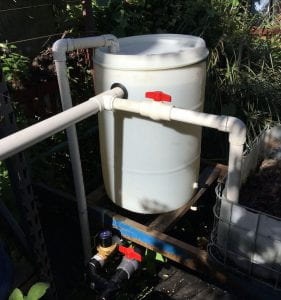
The horizontal lengths of pipe that leave from the gasket on the barrel are what direct the clean water to the plant beds. This is split into two pipes here, one going to the bed directly next to the tank and the other pipe takes it to the other plant beds and deep water culture beds. Below is a picture of the water outlet into the deep water culture beds.
This type of grow bed is better suited for leafy plants like lettuce and kale, which grow at an even faster rate with this method. Currently there are lettuces growing (not pictured) in the deep water culture beds. Below are a couple pictures of the entire system so far. You can easily see where the outputs of the barrel go, as well as the usefulness of the opaque barrel.
The previous barrel was solid blue, which did not allow users to see the water level or the waste accumulation in the bottom. In the picture, you can see clearly where the water level is and the absence of sediment at the bottom of the barrel.
Next Steps
We are going into the final week! The piping from the waste output of the barrel will be connected to the biogas unit, along with the electronics. The area has been cleared of weeds and debri that were originally blocking the path from the output valve to the biogas unit, which will make installation a breeze. We also include two educational posters. One will be placed on or near the barrel, illustrating how the barrel works. The second will be placed on the biogas unit, illustrating how biogas is produced and what the inputs are. After that, the project will be COMPLETE!!
